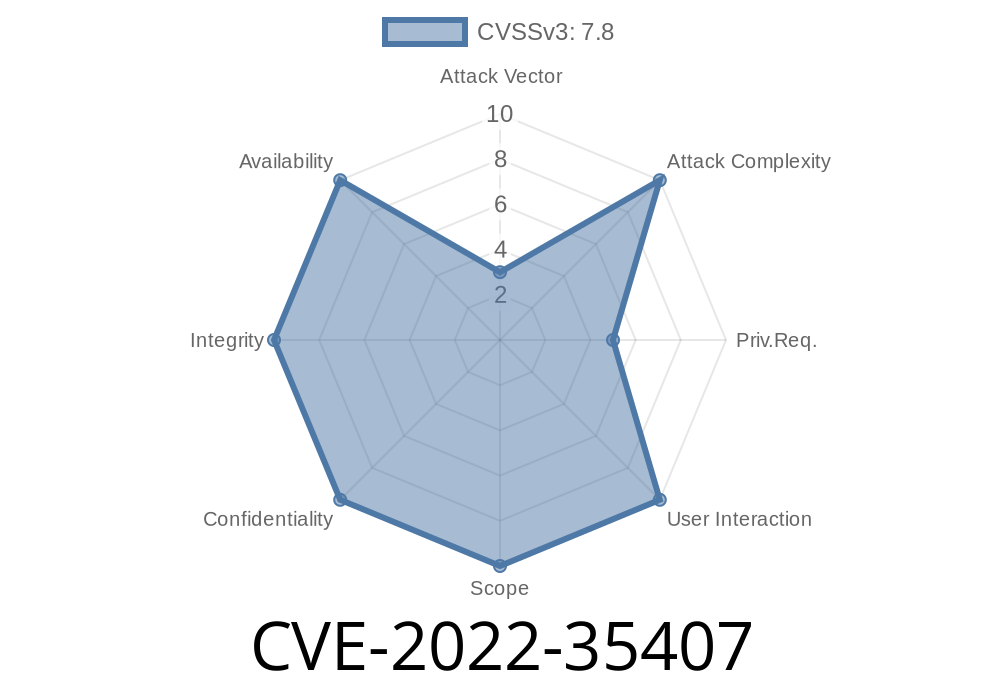A recently discovered vulnerability, tracked as CVE-2022-35407, affects InsydeH2O, a popular firmware/BIOS provider for various Intel systems. The vulnerability exists in the SetupUtility driver, impacting systems with kernel versions 5. through 5.5. It allows an attacker to overwrite the buffer and execute arbitrary code by changing certain UEFI variables. In this post, we will dive into the details of this vulnerability, including a code snippet showcasing the issue, links to original references, and available exploit details.
Vulnerability Details
The bug in question is a stack buffer overflow that arises when an attacker manipulates the values of specific UEFI variables handled by the SetupUtility driver. If the size of the second variable exceeds the size of the first, the buffer will be overwritten, and arbitrary code execution becomes possible. This vulnerability is especially concerning as it may allow an attacker to gain control of the target system during the boot process, enabling them to perform a wide range of malicious actions.
Code Snippet
The following code snippet demonstrates the stack buffer overflow vulnerability in the SetupUtility driver:
UINTN SizeOfVariable_2 = GetVariable ("TheSecondVariable", YourGuid, &Attributes, &Size, Buffer_2);
UINTN SizeOfVariable_1 = GetVariable ("TheFirstVariable", YourGuid, &Attributes, &Size, Buffer_1);
if (SizeOfVariable_2 > SizeOfVariable_1) {
memcpy (Buffer_1, Buffer_2, SizeOfVariable_2);
}
In this example, copying the content of Buffer_2 into Buffer_1 without checking if the size of Buffer_2 is larger than Buffer_1 could result in a buffer overflow, potentially allowing an attacker to overwrite the memory and execute arbitrary code.
Exploit Details
There are currently no known public exploits targeting this specific vulnerability (CVE-2022-35407). However, a skilled attacker with knowledge of the affected function or code segment could develop an exploit by reverse engineering and analyzing the SetupUtility driver. The attacker would first identify the vulnerable UEFI variable and then craft data that would trigger the buffer overflow while also carrying a malicious payload for code execution.
Original References
The issue was initially reported by Insyde Software and has been acknowledged by the company. You can find more details on their official Security Advisory and the CVE entry:
1. Insyde Software Security Advisory: https://www.insyde.com/security-advisory/
2. NIST National Vulnerability Database (NVD) - CVE-2022-35407: https://nvd.nist.gov/vuln/detail/CVE-2022-35407
Conclusion
CVE-2022-35407 is a critical issue in the Insyde InsydeH2O SetupUtility driver affecting kernel versions 5. through 5.5 on Intel platforms. It has the potential to allow an attacker to execute arbitrary code by exploiting a stack buffer overflow vulnerability when changing specific UEFI variables. Users of affected systems should be aware of the issue and apply any available patches or updates promptly. Developers should also learn from this example to avoid similar stack buffer overflow vulnerabilities in their software by ensuring proper bounds checking and secure coding practices.
Timeline
Published on: 11/22/2022 02:15:00 UTC
Last modified on: 11/30/2022 18:23:00 UTC
